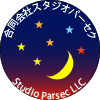Currently, the use of CMOS cameras has become common in deep sky astronomy photography, and it has become standard to control everything from equatorial mounts to focusers and filter wheels all together on a computer. For Windows PCs, there is a system called ASCOM that acts as an intermediary between devices and apps, and there are apps that are compatible with ASCOM. Since Windows is a proprietary API, I think apps are made to take advantage of Windows' functions. (I have never used a Windows astronomy photography app, so I cannot say for sure.)
On the other hand, macOS has INDI as the equivalent of ASCOM, and there are open source apps such as KStars and CCDCiel that support INDI. However, since the low-level API of macOS is almost the same as Linux, open source apps are made to be the same at the source code level, and the UI uses Qt and other tools, which is different from the macOS standard, and as a macOS app, it loses its sense of unity, and I felt that it was a waste that the various APIs provided by macOS and Apple were not used.
In addition, I wanted to easily shoot with multiple cameras at the same time, and I wanted to be able to control multiple shooting systems (multiple equatorial mounts) simultaneously with one PC. In addition, simultaneous shooting with multiple cameras will be supported by KStars from the release of v3.7.2 on August 3, 2024.
For these reasons, we developed and released ParsecDeepSky as a deep sky astronomy photography app exclusively for macOS. For development, we adopted Swift as the development language, and decided to use SwiftUI for the UI, star chart display, and GPU where necessary.
In the next article, we will write about installing and setting up Ubuntu on Raspberry Pi in preparation for deep space astronomy photography on a Mac, and hope to help those who enjoy astronomy photography using a Mac.
